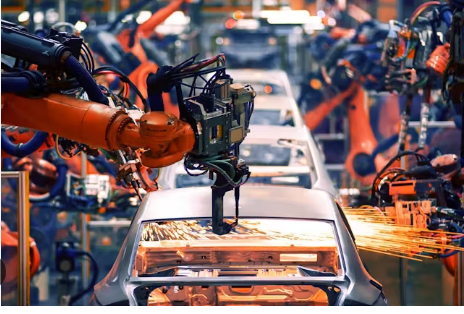Welding work is the backbone of the many manufacturing processes across a wide range of products from fabrication for large ships to construction of tiny electronics devices in the industrial sector. Just like industries evolve, so does welding technology.
Note: Find more information about welding wire and welding techniques at UDO website – https://www.udo.co.th/
To get efficiency, quality and competitiveness, you have to constantly upgrade and always stay ahead of the rat race. In this blog, we will discuss the latest developments that have transformed the welding industry.
Automation/Robotics For 2020
Automation and robotic technology have quickly become the key to success in the industrial welding industry over the years. Robot welding systems deliver more precision, consistency, and faster welding applications that enable professional welders to focus on more critical aspects of the welding operation. Excellent on repeat jobs, which can free up the skilled welder to work on finer-detail jobs. One is “cobots,” or collaborative robots, that are intended to work alongside humans and therefore improve both output and safety.
Advanced Welding Processes
ApplicationsShielded Metal Arc Welding (SMAW), often referred to as Stick welding Gas Metal Arc Welding (GMAW), often referred to as mig welding These remain the core processes of welding along with the newer processes such as:
Laser Welding- This is a high precision process where a laser is used to focus and melt the materials and join the. It is highly versatile, works on various materials and thicknesses. Automotive and aerospace applications use laser welding because it provides strong, cosmetically appealing welds.
Friction Stir Welding (FSW):This form of welding is an anti traditional welding for the reason that it does not cover the material that is to be fused. No, but instead a spinner that emulsifies them. The method is ideal for joining dissimilar metals and for high strength and corrosion resistant weld properties.
EBW (Electron Beam Welding): An electron beam welding is a high-energy high-penetration process to create a weld. The aerospace and nuclear industries frequently resort to this perfect welding method to join thick components and exotic materials.
Concept 6. Deal Directly With the Digital & Data Analytics
Data Welding is an Industry Darling. Sensors and software now measure and analyze welding parameters live. This data enables the diagnosis of weld quality, equipment performance and warning of potential problems. Leverage Data Analytics, Empower Weld Processes to Work Efficiently with Essential Defect and Downtime Reduction for Manufacturers
Brothers maximize your health, safety, and impact.
Hence, it is very important to have safety policies and procedures that will protect the employees from harm and prepare them for every situation. Click here to find out how new technology trends make work areas safer for the welder, with fume extraction systems and gear.
The Bright Future of GHI and Greening the Globe: Sustainability beyond Paris Laser welding and similar new generation welding processes, consume significantly lower energy compared to conventional methods. Furthermore, there is an increase in demand for welding materials and consumables that are environmentally friendly.
Training and Upskilling
Over time, as new welding technologies are developed, the skills that welders must possess in order to be able to keep using them will change as well. Welders will need to be upskilled in the altered traditional ways of training (now shortened in their digital avatars) and integrated with the new in order to compete in this ever evolving industry.
Challenges and Opportunities
Despite endless new opportunities, challenges accompany forward-thinking and never-tried-before technologies. The capital cost of automation and robotics can be expensive to start. Also, welders might need time to learn new methods and digital technologies.
But they are all better than the long term benefits. These technologies offer a number of benefits to industrial welding including increased productivity, better quality and safety.
Looking Ahead
Welding in the future of industrial work is looking promising. The spirit of innovation is keeping us on our toes and testing the limits of what is conceivable. They promise greater automation, more digitization and an ongoing emphasis on safety and sustainability.
Conclusion
The welding business in the industrial workplace is currently undergoing transformation. Manufacturers taking advantage of new trends and technologies help ensure their readiness to compete in a fiercely competitive global marketplace. And it will continue to be vital in the development of products and infrastructure that shape our modern world, as much as it has before as we move forward.
SEO Considerations:
Keywords: All over the article, I intentionally put some keywords like “welding work in the industrial sector.”, “industrial welding.”, “welding technologies.”, “welding automation” and a lot of.
A Brief Meta Description that Summarises Key Post PointsisEnabled the meta description plugin
This includes Internal and External Links – I have included appropriate Internal and External Links to add more context and provide resources.
And if you want any changes or more SEO…

